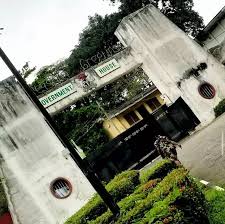A few days ago Seyi Makinde the Governor of Oyo state was trending . The issue was Oyo state Executive council decision to approve the total reconstruction of Oyo state Government house complex for 63billion Naira .A residence the Governor is not staying as he has been staying in his personal residence since his inauguration 6yrs ago. So I thought what is the logic for this? Why now?
So here are my thoughts on the rehabilitation of Oyo State Government House, integrating historical, practical, psychological, and symbolic dimensions:
1. Preservation of Historical Legacy & State Identity
– Colonial Heritage: As a colonial-era complex, the Government House embodies Oyo’s political evolution. Restoring it honors historical continuity while modernizing functionality.
In February 2027 Oyo state will be 50yrs. So 50th Anniversary Symbolism (2027): A revitalized complex would stand as a tangible monument to Oyo’s 50-year journey, reflecting resilience and progress—much like India’s Rashtrapati Bhavan or South Africa’s Union Buildings.
2. Soft Power & Diplomatic Necessity
– Global Precedent: The White House, Aso Villa, and UK Chequers aren’t just offices—they project stability, heritage, and authority. Hosting dignitaries in subpar facilities (e.g., Sierra Leone’s President should have been hosted as guest in Oyo state Government house instead of IITA ) damages Oyo’s credibility and Nigeria’s image.
– Economic Implications: Investors and partners assess state or corporate competence through infrastructure. A dilapidated seat of government signals institutional weakness, deterring investment. That’s why Corporate bodies invest lots of money building their headquarters. Google spent $2.1billion dollars building their Manhattan office. Just look at the Lagos Marina skyline and see the corporate Glass offices justling for prominence.
3. Psychological Impact on Governance & Citizen Morale
– Architectural Psychology: Studies (e.g., by environmental psychologists like Roger Ulrich) confirm that dignified public buildings foster civic pride and trust in institutions. Decay breeds apathy; renewal inspires confidence. A visit to Asokoro in Abuja where Most state Government houses are located will show you the State Government that are doing well by looking at their Government house. Oyo state house looked shabby before Seyi Makinde renovated it . Now it is a pride to Oyo state indigenes living in Abuja.
– Gubernatorial Symbolism: A Governor residing/working in the Government House (unlike Makinde’s avoidance) demonstrates commitment to state institutions. Leadership presence in a restored complex reinforces accountability.
4. Economic Pragmatism & Long-Term Value
– Cost of Delay: In 2020 The cost would have been ₦13bn vs. current cost of ₦63bn . Reflecting the exchange rate deference’s of 340 Naira to $1 dollar in 2020 and 1540 Naira to $1 currently. The contrast underscores the penalty of deferred maintenance—a universal truth in asset management. Further delay will escalate costs exponentially. In 1991 Abuja conference center was built for 240million Naira. In 2025 it was renovated for 39billion Naira and now called Bola Ahmed Tinubu Conference center. I wished I had bought the Tokunbo Toyota Hylander I wanted in 2020 for 3.8million Naira. Now it is 30 million Naira.
– Holistic Development Argument: Governance isn’t zero-sum. Just as nations fund palaces and hospitals (e.g., UK’s Buckingham Palace upkeep alongside NHS funding), states must balance symbolic infrastructure with social services. A functional government hub enables efficient service delivery.
5. Functional Imperatives
– Security & Efficiency: Modern governance requires integrated facilities for meetings, crises, and ceremonies. Ad hoc arrangements (e.g., hosting PDP governors in hotels) compromise security and operational cohesion.
– Cultural Hub Potential: A restored complex will boost tourism and civic education. Was it not when Seyi Makinde became Governor that access roads around the Government house Was fully opened to General public .
But then Why Not use it for”Only Social Services”?
– Parallel Development: “Pari passu” (Latin for “equal pace”) governance acknowledges that state image, heritage, and functionality are prerequisites for attracting resources for social projects. Nigeria’s Presidential Villa enables diplomacy that secures international aid.
– Opportunity Cost of Not Restoring: The diplomatic embarrassment during high-profile visits indirectly harms economic opportunities that fund social programs.
– Fiscal Responsibility: The project can stimulate local jobs and use phased financing—not necessarily diverting ₦63bn at once from critical services.
Conclusion: For me this is a Legacy for Generations.
Governor Makinde’s push aligns with global best practices:
– Symbolic Renewal: Like France’s €2bn Élysée Palace renovation, states must invest in heritage seats of power.
– Strategic Timing: Oyo’s 50th anniversary demands a landmark achievement—a restored Government House would embody the state’s past dignity and future ambition.
Governance Realist: Leadership requires balancing immediate needs with legacy institutions. This project isn’t extravagance; it’s foundational to Oyo’s identity, functionality, and prosperity.
Final Word: To neglect this complex is to erode Oyo’s institutional memory and global standing. Its restoration is an investment in the state’s soul—one that will resonate through the next 50 years.
Just my thoughts
Akin Bolarinwa
Follow us now for more news in Oyo State. Oyo Truth is an independent online news /medium reporting up-to-date events, happenings and activities related to Oyo State, Nigeria.







Leave a Reply